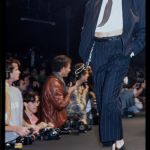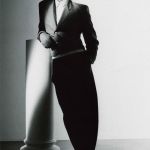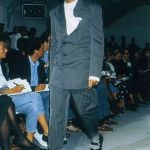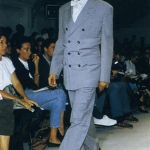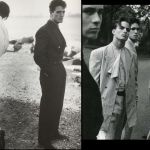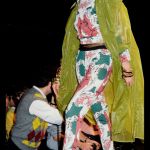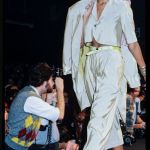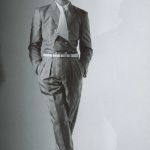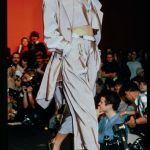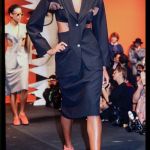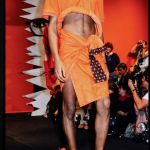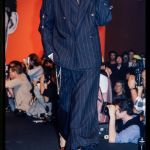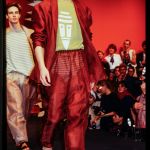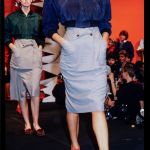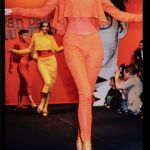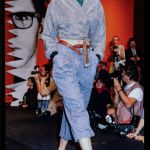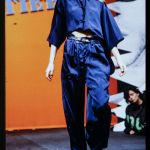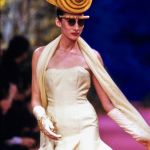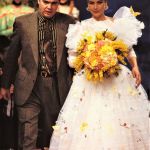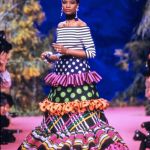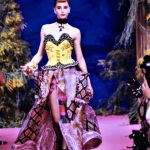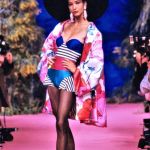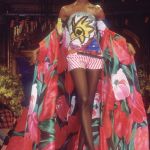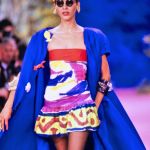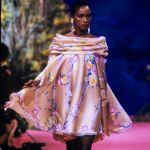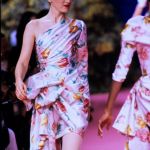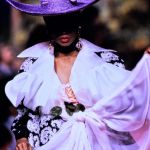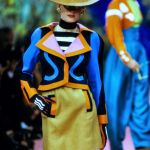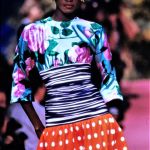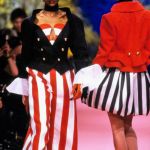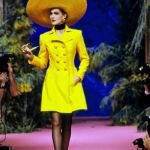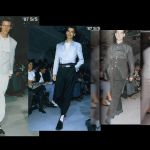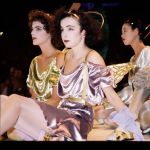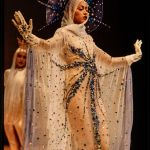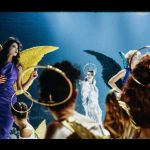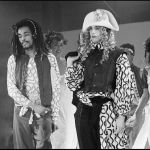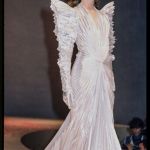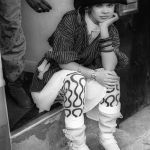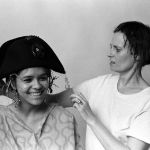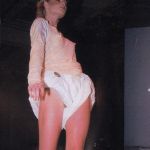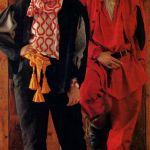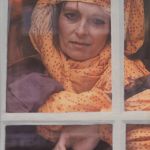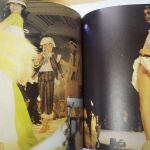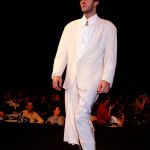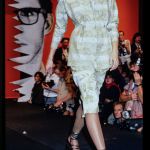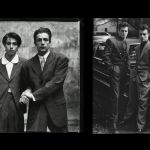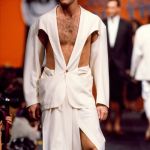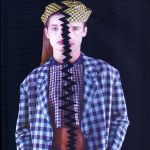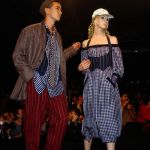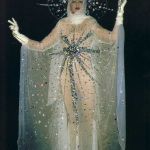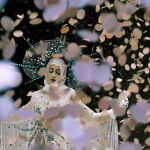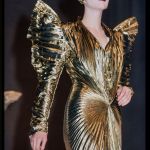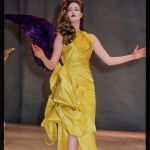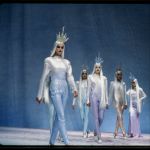
The most iconic fashion shows of the 80s
From Thierry Mugler to Comme des Garçons
March 18th, 2020
Until the mid-sixties, the fashion show was guided by strict rules: models who moved silently among clients and journalists. Then with Courrèges and Kenzo the models started dancing rather than walking, until, in the 80s, those presentations became real happenings with theatrical performances and guest stars on the catwalk. From Claude Montana to Thierry Mugler, from Giorgio Armani to Franco Moschino, from Jean Charles de Castelbajac to Christian Lacroix, there were many designers who shaped the aesthetics of the era with their creations and shows.
We selected five fashion shows iconic for the clothes, the set, the models or the performance.
Vivienne Westwood FW 1981
Pirate not only marked Vivienne Westwood's entry into the international fashion establishment, it was also her first collection to be presented with a real show during London Fashion Week in 1981. Left punk behind, the designer found inspiration in art and history. The result was a series of romantic, unisex and colorful pieces for FW that evoked the imagination of bandits, dandies and buccaneers and became the uniform of many pop stars in the New Romantics underground movement, from Boy George to Adam and the Ants. The cult item of the collection were the Pirate Boots which, handmade in London and equipped with a flexible upper, were the embodiment of laid-back cool, so much so that they were re-proposed season after season. Recently they have also inspired a particular version of Vans Sk8-Hi Platform.
Thierry Mugler Haute Couture Fall 1984
1984. In Paris, for the first time a couturier unveiled his collection to the mass public, who bought a ticket as if for a concert. It was Thierry Mugler who, to celebrate the tenth anniversary of his brand, staged L'Hiver des Anges at the Zenith in the Villette district, in front of a paying audience of 6,000 people. More than just a fashion show, the event was an artistic performance combining fashion, music and theatre, with models turned into angels or dressed in outfits inspired by the Olympics, space and religion. In the finale, which journalist Marion Hume described as "a brave, deranged declaration that fashion designers, and even ordinary mortals, need not be confined by the gravity of planet Earth", a Madonna-like Pat Cleveland came down from the ceiling in a shower of petals.
Recalling that moment, Pat said:
I was six months pregnant when I came down out of the sky. [….] I said okay and they hooked me up to this contraption in the ceiling. It attached under your arms and under your bottom, like a parachute; if you’ve ever seen Peter Pan, it’s the same thing. [….] The god of fashion had me in the sky coming out as the Miraculous [in a] dress with beautiful blue stones…It was a magnificent [….] I always felt [like I was making history] when I did [his] shows because he is one of the most fabulous creative showmen.
Jean-Paul Gaultier SS 1985
Jean-Paul Gaultier's creations have always crossed gender boundaries, playing with traditional roles, mixing male and female, tailoring and casual, tradition and modernity. In 1985, during his memorable fashion show Et Dieu créa l'Homme (a nod to the famous movie starring Brigitte Bardot Et Dieu créa la femme), he launched the skirt for men.
My first skirt for men which was actually a pant/skirt. I never wanted to shock, I just thought that the time was right for it. When I was thinking about this show one of my friends who is straight came back from the holidays and walked into my studio wearing a sarong. It showed me that I was right and that the skirt for men was in the air.
Despite its modest early commercial popularity, this item has the merit of breaking taboos and raising new questions about sexual identity. Although the Gaultier points out:
A man does not show his masculinity in his clothes. His masculinity is in his head.
Comme des Garçons Homme Plus SS 1987
With her creations for Comme des Garçons, Rei Kawakubo presented a completely new and revolutionary counterpart to the trends of the period, providing an antidote to the exaggerated and refined proposals that characterized the 1980s. Her black and almost monastic fashion and her radical vision of fashion have conquered an audience accustomed to excess, color and loud items that also includes many celebrities. The most iconic of these was Jean-Michel Basquiat who took part as a model, sporting a pair of grey suits, in Comme des Garçons Homme Plus SS 1987 fashion show. Alongside Basquiat, artists Robert Rauschenberg and Francesco Clemente and actors John Malcovich, Dennis Hopper and Julian Sands also walked the CDG catwalk.
Christian Lacroix Haute Couture Spring 1988
Christian Lacroix defined the aesthetics of the 1980s, combining bright colors and extravagant decorations. His neo-baroque style, rich in embroidery, velvets, ruffles, embellishments, jewelry, folklore and traditional elements reflected the desires of a new generation hungry for luxury. The perfect example of this opulence was the "le pouf", the balloon skirt, often worn with a short blazer jacket. The haute couture shows maximized all these aspects and were so successful that journalist Julie Baumgold wrote about his fashion:
Such wonderful dresses and such a provocative luxury were perhaps last seen in the 18th century, when the French aristocrats on chariots passing by the cobbl with great fanfare on the cobblestones set off on their journey to the guillotine.

















































